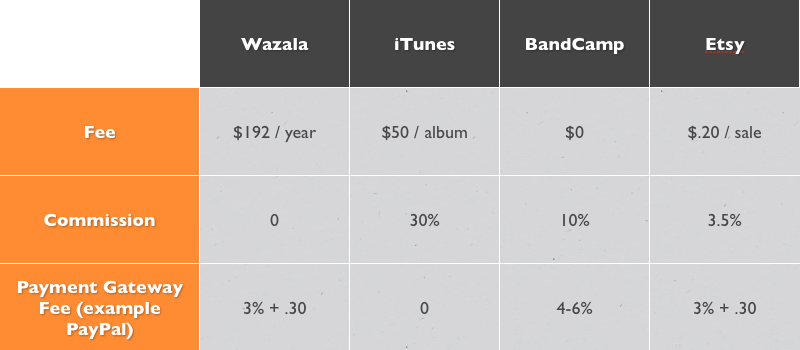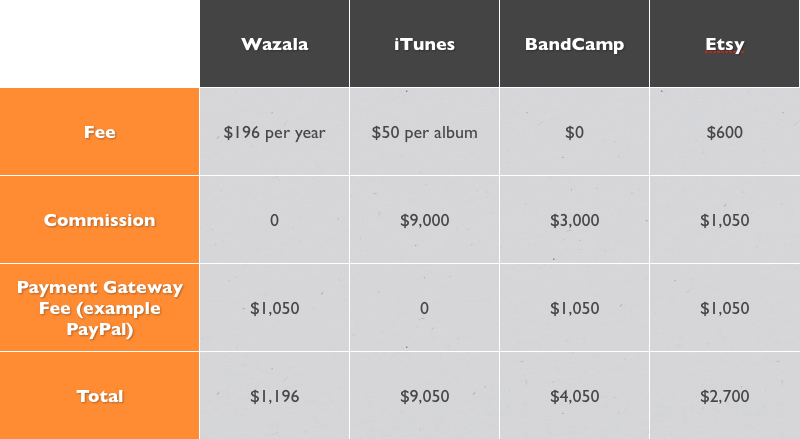
The lights go down and you begin the long arduous process of loading your gear back into the van. You had a great set and need to finish loading up so you can man the merch table and hopefully sell enough to pay for gas to get you to the next stop on tour. This is the everyday grind of the working independent musician and I love it. But one day I hope to grow and have someone else man the merch table and that is going to cost me.
As a creative it is important to take your art and distribute it in a way that benefits you the most. Every dollar that comes in is important to the growth and success of your creative career. In 2013 it is not surprising that many artists are selling music and products online through established marketplaces like Etsy, iTunes, BandCamp, and many more. These marketplaces allow for the artist to list and sell their products online using the marketplace’s specific web presence in hopes to gain more sales. Marketplaces typically take a percentage of each sale for their services and marketing efforts.
As you grow your business and begin to see returning customers, brand recognition, and increased social media presence it is now time to take a closer look at how you sell and distribute your products. By now you have a facebook page, a website, and possibly a blog to inform customers and market to them about new developments. It’s time for you to consider selling directly to your customers with your own shopping cart. Below is a chart breaking down the costs of having your product on marketplaces and how having your own shopping cart can really benefit your bottom line.
Here is the break down for some popular online marketplaces that work with musicians and artists to sell products in comparison to having your own shopping cart solution.

Now that we have an idea of what the costs and fees are for each marketplace in comparison to the Wazala shopping cart solution let’s plug in some real world numbers and see how they stack up.
These numbers are based off of projected yearly sales of 3,000 items at $10 per unit for a total of $30,000 in sales. That’s less than $3,000 per month in revenue. This can be albums, art works, photographs, jewelry, etc..

As you can see from the example as you grow your fans/customers it becomes more and more beneficial to have your own store in addition to your pre-existing marketplaces. Your own store allows you to collect more income per sale and as you funnel customers from your marketplaces, social media platforms, and marketing strategies to your store you will see the savings add up. These savings are the fruits of your hard work. It is in your best interest to use several marketplaces to sell and share your art online, but as you grow, you need to grow with your fans by offering them a full experience with your brand directly. Having your own store increases your brand’s credibility and can build more consumer confidence. It says to the customer that you are serious about your career and are taking steps to become more professional.
Managing your own personal online store that exists on your webpage, blog, and Facebook profile works to expand your reach to new fans by working alongside your existing marketplaces. This multi-leveled approach to distribution is how all-successful brands sell products. The more opportunity you give fans to buy your stuff the more stuff you will sell and if you are allowing fans to buy directly from you and from a marketplace at the same time you will be able to capture the impulse buy on every platform.
With the right tools and some number crunching your next tour could be much more comfortable. Consider the break down for a moment; even at the lowest savings of about $1,500, what could you do with that extra money to help further your career? More t-shirts, stickers, gas money, roadies, sound mixer, the list could go on and on. So let’s put in the hard work and work smarter to make every dollar count toward fulfilling the dream. ROCK ON!